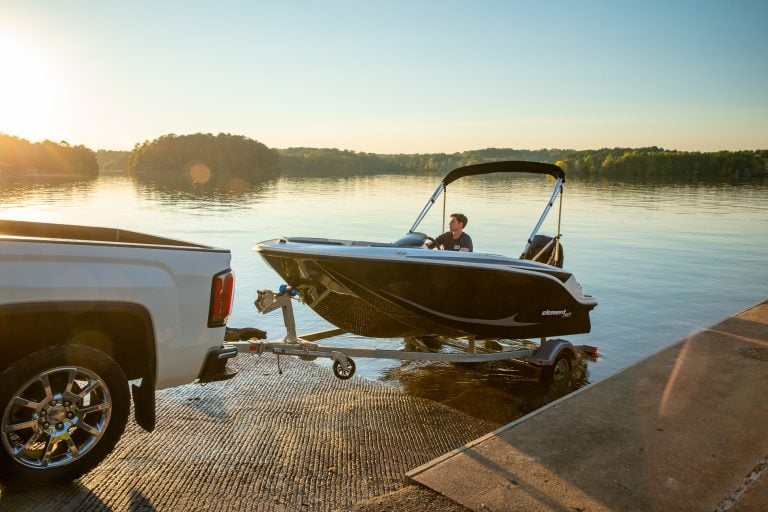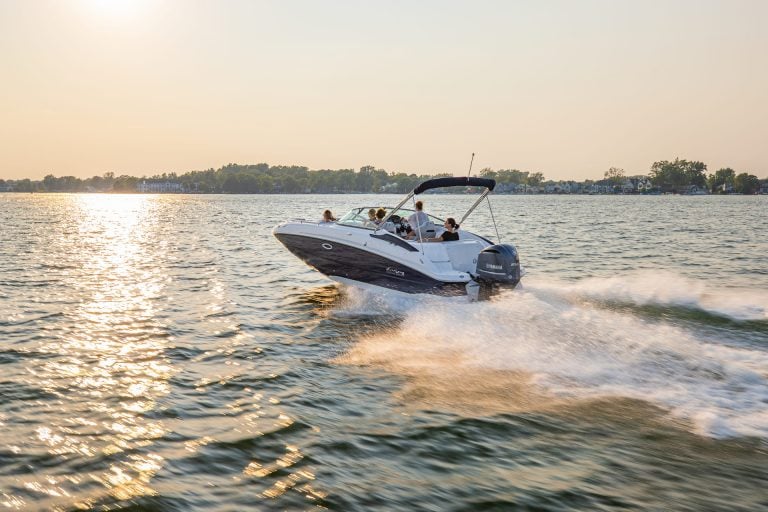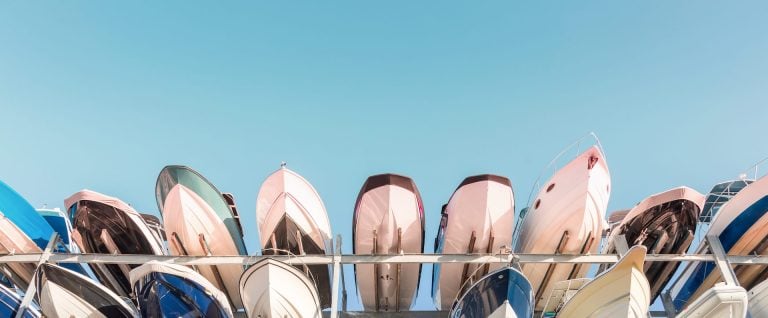Filling up your boat’s tank is a bit more complicated than gassing up a car or truck. There are many simple but potentially life-saving safety precautions you should take before, during, and after fueling your boat. Many of these rules apply whether you’re mooring to a gas dock, towing your boat to a gas station, or using portable gas containers.

Reduce the risk of spilling
If you’re at a gas dock or filling up with a portable container, make sure your boat is securely fastened to the dock. The less your boat moves while you attempt to fill it, the better. Using more lines, including spring lines, will add stability.
Ask all the other passengers to disembark and stretch their legs on shore. You don’t need them rocking the boat while you’re trying to fuel up. It’s also safer to have them off the boat should something go wrong.
Take precautions against fire
There are several things you can do to minimize the risks of a boat fire. The first and most important precaution is to shut off your engine. Make sure other boaters nearby know that you’re filling up and ask them to not start their engines until you’re all done. You should follow the same precaution if someone is fueling their boat near yours.
If your boat has any interior space, seal it off by closing all doors and windows. This will help keep any fumes from becoming trapped inside. You’ll also need to make sure all flames (including grills and cigarettes) are put out and all electrical devices (including generators) are turned off.
If you’re filling up portable containers at a gas station dock, fill them up on the ground, not on your boat or truck, which can cause static electricity.
Check for wear and tear
Before fueling, check your lines, hoses, clamps, vents, and tank for any damage, including loose connections, rub spots, cracks, rust, and corrosion. Make sure none of the vents are blocked. If you use portable containers, also check them for any wear.
In addition to checking everything before you start fueling, you should make a more comprehensive inspection of your fueling system a regular part of your routine. It’s better to catch and address any issues before they become a problem.

While filling up your tank, keep the nozzle in tight contact with the edge of the tank opening to steady your hand and ground any static electricity. Fill the tank slowly and keep your hands steady to prevent splashes and drips, and keep an eye on your progress to prevent overflow. Keep an absorbent pad close at hand and if you notice any drips as you’re fueling, use it to wipe up the fuel before it hits the water.
If you’re using portable containers, use a filtered funnel to reduce the risk of spilling and to remove any contaminants. Fueling a boat with portable containers can make it tricky to keep the nozzle steady, so when you buy your containers, make sure they’re comfortable to hold.
Clean up any messes
Turn the pump off and be careful to hold the nozzle upright while putting it back to prevent spilling any fuel left in the hose. Close the tank tightly and check for any drips. If there’s any fuel on the side of your boat, wipe it up with an absorbent pad and dispose of the pad properly.
It’s very important to let all gas fumes dissipate before starting your boat back up. Open all the hatches and ports you closed before fueling and let them air out. If you smell gasoline anywhere on the boat, you’ll need to run your ventilation system or blower for 5 minutes or so before starting your engine. If your boat doesn’t have an interior, you should still wait until you no longer smell any gasoline.
Only once all fuel vapor is completely dissipated should you start your engine, let your passengers on board, turn on any electronic devices, or light any flames.
If you’re using portable containers, it’s also important to store them in a cool, dry, dark place that’s well ventilated and away from the engine or any electrical equipment.

Don't wait until you're running on empty
To be on the safe side, fill up your tank when it drops below the halfway mark. The last thing you want is to run out of gas while away from shore.
Don't fill your tank above 40%
Gasoline expands as temperature rises, so you always need to leave extra space in the tank.
Stay focused
Don’t use hands-free clips and don’t try to do anything else while fueling up. Obey the no electronics rule — don’t use your phone while at the pump.
Keep a fire extinguisher on board
You should always have a fire extinguisher on your boat and keep it within easy reach.
Fuel during the day
When you get gas during the day, you won’t need additional lighting. Since they’re electronic and could potentially cause a spark, flashlights should only be used to fill up at night in the case of an emergency.
Be responsible about spills
If you do spill fuel, stop the source immediately, thoroughly clean up any affected surfaces with an absorbent pad, and then dispose of it properly. If the spill reaches the water, you will need to tell the dock managers so they can take appropriate action to clean it up.
If it sounds like there are a lot of rules for fueling up your boat, there are. Each rule has a good reason behind it, however, and each rule is centered around keeping you, your passengers, and your boat safe. Taking a handful of simple precautions and a few extra minutes could be the difference between an enjoyable boat ride and a disaster — so follow these fueling rules, make them a habit, and before you know it, you’ll be practicing them automatically as part of your boating routine.


